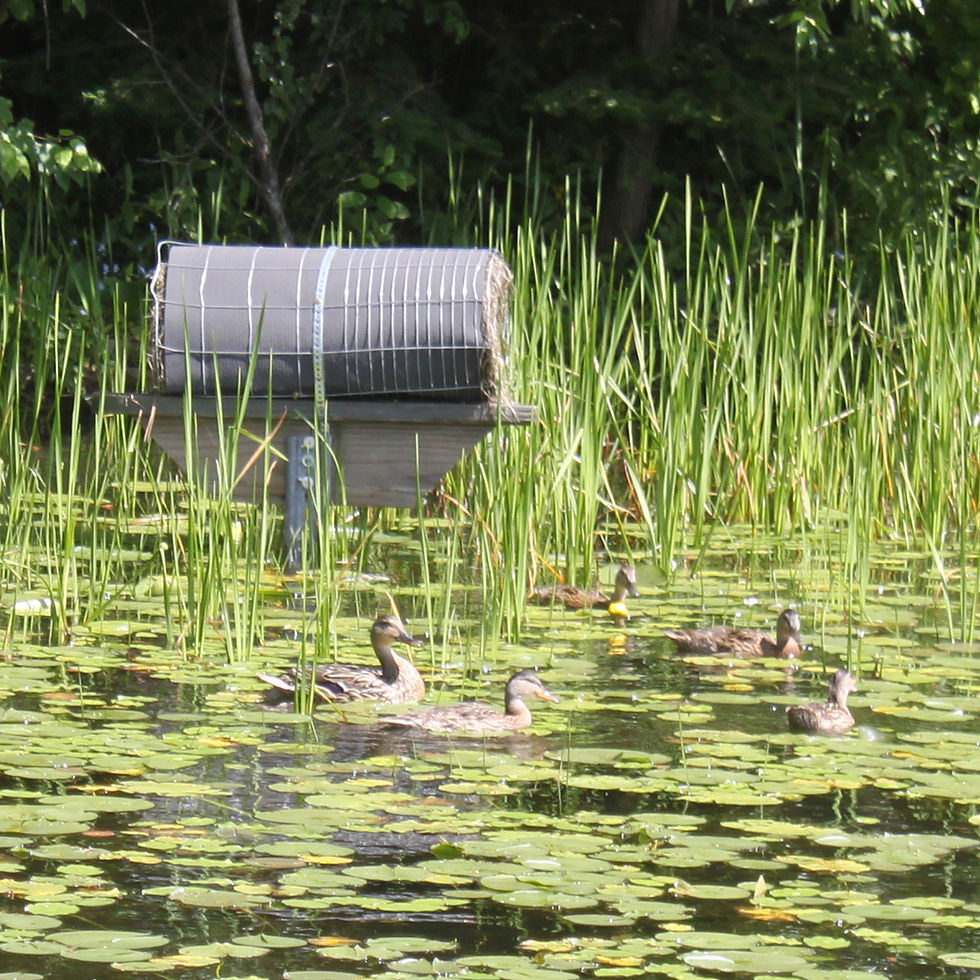FWS Surveys, DU Projects Paint Bright Future
- North Dakota Wildlife Federation

- Aug 28, 2024
- 3 min read
The recent release of 2024 duck survey results by the United States Fish and Wildlife Service (FWS) point to incremental improvements in waterfowl populations throughout the birds’ breeding territories in the country. Those facts coupled with a substantial grant to Ducks Unlimited (DU) has the organization seeing positive gains not only in the number of birds hunters will likely encounter in the skies this autumn, but also in terms of habitat and huntable spaces available to them in the near future, according to Benjamin Romans, DU Communication Coordinator.
It's pretty exciting actually. This year there was a five percent overall increase in the number of waterfowl in the breeding states in the prairie pothole region. The reason this is a big deal is because its the first increase we’ve had in breeding ducks since 2015. Whether it’s been drought or lack of breeding grounds, the past few years have been really hard, we’ve seen, decline, decline, decline, across the board, so this year some species took a huge jump and some species took a little jump, most notably mallards had an increase for the first time in a long time, so people are really excited,” Romans relays.

Most notable of the increases in species was the eight percent uptick in mallards observed in the FWS survey, the first time that species has seen a positive rise since 2016. American Wigeon jumped more than half over their 2023 counts, and 12 percent
above their long-term average. Green-winged teal and scaup also showed significant increases year over year, with the former species well above their historical average, at 38 percent. Of concern to those at DU were the continued decreases in blue-winged teal and northern pintail numbers, with pintails being a species of special concern to the organization. Respectively, they were off 12 percent and 11 percent, with pintails lagging their historical average by 49 percent overall.
“American wigeon increased by 55 percent, now this could be related to a sampling
error and our scientists are cautious about that number. It is a large number, but the
wigeon nest primarily across the boreal forest which ratios from wigeon harvest have
been consistently good,” Romans details of the largest jump noted in the survey.
In hopes of turning those numbers around, and continuing the increase seen in other
populations of duck species, DU recently announced a $100 Million gift from cable and
broadband giant Cox Enterprises to DU’s Wetlands America trust, focused on habitat
improvement projects in the prairie pothole region and preserving the area’s duck
producing spaces for generations to come.
“We received an amazing gift - $100 Million from Cox Enterprises – that money is
earmarked just for projects here in the prairie pothole region. We’re hard at work trying
to make every dollar count, stretch it as far as we can stretch it and looking for some
interesting projects we haven’t been able to tackle before. So we are super busy with that and we will be for the next four or five years,” Romans details, adding, “we’re still
collaborating with private landowners through voluntary incentive-based programs that
benefit both the landowner and their bottom line and waterfowl and wildlife and that’s
going really well now that people are seeing more value in wetlands; and word of mouth
is spreading: what’s good for cattle is good for waterfowl.”
More information on the survey and on DU can be found online at ducks.org. The
resident duck season opens in North Dakota on Sept. 21, with the youth duck hunting
weekend a set for Sept. 14 and 15. South Dakota’s Low Plains North and Middle duck
seasons start Sept. 21, with the youth weekend being Sept. 7 and 8.
By: Nick Simonson




Comments